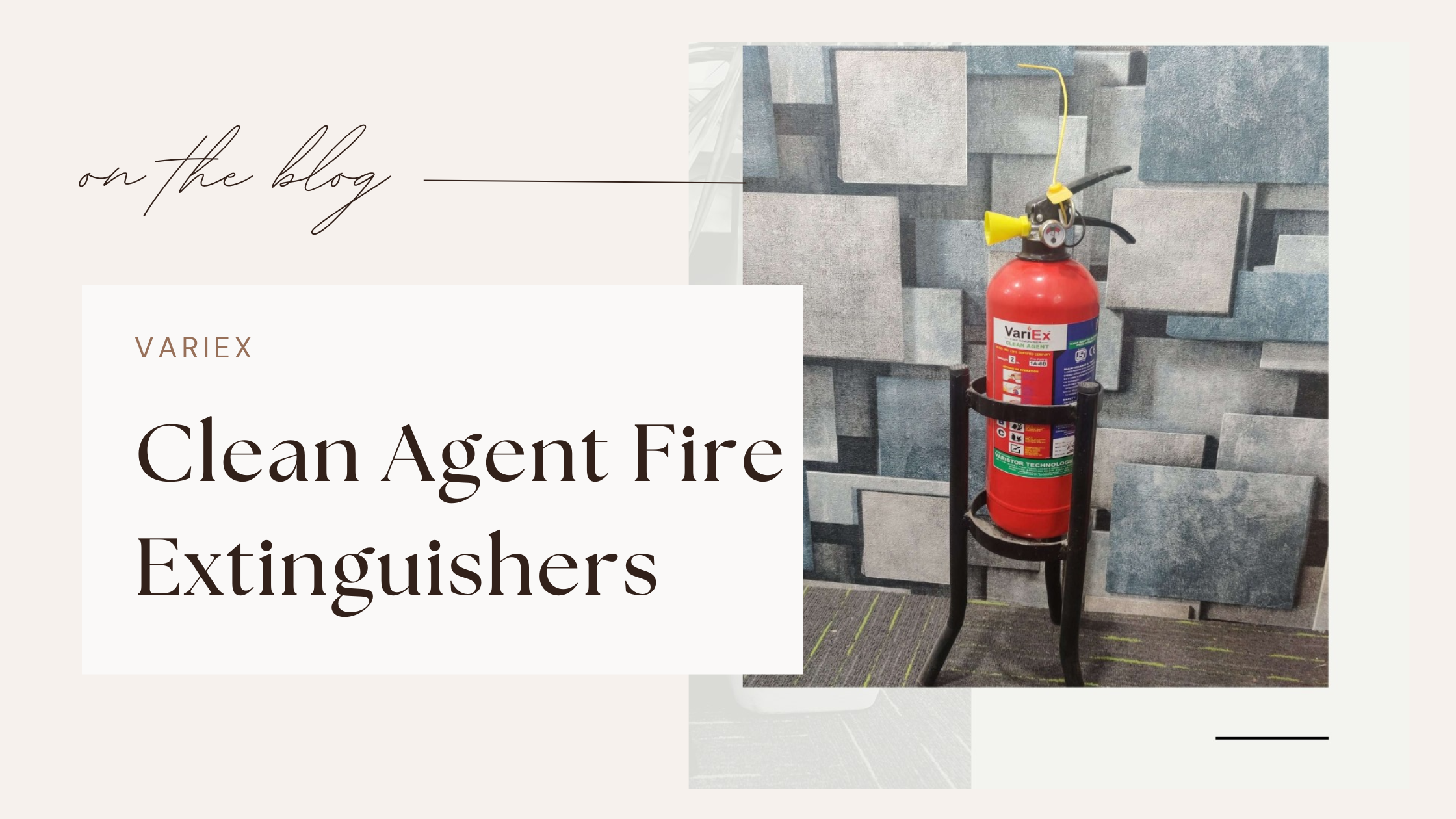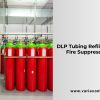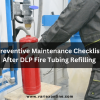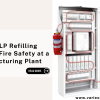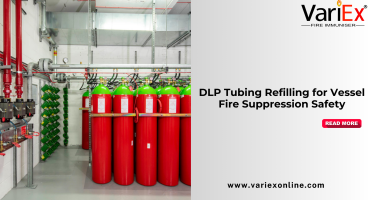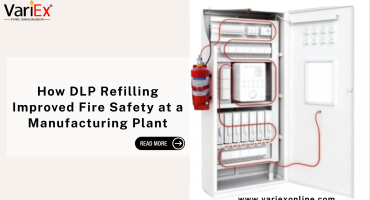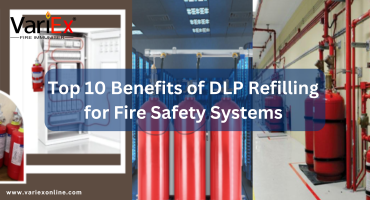Regular maintenance includes monthly visual inspections, annual servicing by certified professionals, hydrostatic testing of the cylinder, and timely refilling or recharging after use or when the agent expires. Proper care ensures they are always ready for emergencies.
![]()
Fire Immuniser
+91-7829629111
Email: info@variex.in
Varistor Technologies Pvt. Ltd.
Block-1, First Floor, Ardente Office One, Hoodi Circle, ITPL Main Road, Bengaluru, Karnataka 560048, IN
Clean Agent Fire Extinguishers
Clean Agent Fire Extinguishers
Fire safety technology has advanced significantly, offering highly effective solutions for specific environments. Clean agent fire extinguishers stand out for their ability to extinguish fires without leaving residue or causing damage to sensitive equipment. This article explores the uses, benefits, advanced features, and types of fires these extinguishers combat.
What Are Clean Agent Fire Extinguishers?
Clean agent fire extinguishers use gaseous substances to suppress fires, typically by disrupting the fire’s chemical reaction, cooling the area, or displacing oxygen. These agents are non-conductive, leave no residue, and are safe for environments with sensitive electronic equipment.
Common Clean Agents:
- HFC-236fa (Hexafluoropropane): Effective and widely used in fire suppression.
- FE-36 (Hexafluoropropylene): An eco-friendly Halon replacement.
- Inert Gases (e.g., Argon, Nitrogen): Used in some advanced systems.
- Novec 1230: A sustainable and highly effective clean agent.
Uses of Clean Agent Fire Extinguishers
Clean agent fire extinguishers are versatile and effective, making them ideal for various scenarios where traditional fire extinguishers may not be suitable.
1. Protecting Sensitive Equipment:
- Data centers, server rooms, and telecommunication facilities use clean agent extinguishers to prevent damage to sensitive electronics.
2. Commercial Spaces:
- Offices, banks, and retail spaces benefit from clean agents that avoid messy clean-ups and downtime.
3. Medical Facilities:
- Hospitals and labs require clean agents to protect expensive and delicate medical equipment.
4. Aircraft and Transportation:
- Clean agents are ideal for confined spaces like aircraft cabins, where traditional extinguishers might cause collateral damage.
5. Museums and Archives:
- Cultural heritage sites and libraries rely on clean agent extinguishers to safeguard irreplaceable items from fire and water damage.
Types of Fires Clean Agent Fire Extinguishers Combat
Clean agent fire extinguishers are highly effective against specific types of fires:
1. Class A Fires:
- Fires involving ordinary combustibles such as paper, wood, and fabric.
- Clean agents cool and suppress these fires effectively.
2. Class B Fires:
- Fires caused by flammable liquids like oil, gasoline, and paints.
- Clean agents create a barrier between the fire and oxygen, smothering the flames.
3. Class C Fires:
- Fires involving energized electrical equipment.
- Clean agents are non-conductive and safe for use on electronics.
Special Note:
- Clean agent extinguishers are not suitable for Class D fires (combustible metals) or Class K fires (cooking oils).
Advanced Features of Clean Agent Fire Extinguishers
Clean agent fire extinguishers incorporate advanced features that make them a preferred choice in modern fire safety systems:
1. Residue-Free Suppression:
- Unlike foam or powder extinguishers, clean agents leave no residue, making post-fire cleanup effortless and preventing damage to sensitive equipment.
2. Environmentally Friendly:
- Many clean agents, such as Novec 1230, are designed to have a minimal environmental impact with a low Global Warming Potential (GWP) and zero ozone depletion potential.
3. Rapid Deployment:
- These extinguishers quickly suppress fires, minimizing damage and reducing downtime in critical environments.
4. Non-Toxic and Safe:
- Clean agents are safe for use in occupied spaces, as they do not displace oxygen to dangerous levels, unlike CO2 extinguishers.
5. Wide Coverage:
- Clean agents disperse efficiently in enclosed spaces, ensuring comprehensive fire suppression.
6. Compact and Lightweight:
- Clean agent extinguishers are portable and easy to use, making them accessible for immediate fire suppression.
Special and Advanced Aspects of Clean Agent Fire Extinguishers
1. Halon Alternatives:
- Clean agent extinguishers are advanced replacements for Halon-based systems, which were phased out due to environmental concerns. These modern extinguishers offer similar performance with sustainable agents.
2. Safe for Electronics:
- The non-corrosive nature of clean agents ensures that they do not harm sensitive equipment or data storage systems.
3. Integration with Fire Suppression Systems:
- Clean agents are commonly used in centralized fire suppression systems for large-scale environments like data centers and industrial facilities.
4. Global Standards Compliance:
- Clean agent extinguishers meet stringent safety standards such as UL 2127 and NFPA 2001, ensuring their reliability and performance.
5. Precision Targeting:
- Advanced clean agent extinguishers allow for precise targeting, reducing the risk of unnecessary deployment and damage to unaffected areas.
Benefits of Using Clean Agent Fire Extinguishers
- Reduced Damage: Ideal for environments where water, foam, or powder extinguishers might cause secondary damage.
- Minimal Environmental Impact: Modern clean agents are designed to be eco-friendly, adhering to international environmental regulations.
- Safety in Occupied Spaces: Clean agents are non-toxic and safe for use around people, unlike CO2 extinguishers, which displace oxygen.
- Quick Action: Clean agent extinguishers are highly effective in rapidly controlling fires, minimizing losses.
- Ease of Use: User-friendly design ensures they can be deployed swiftly by trained personnel or occupants.
Maintenance of Clean Agent Fire Extinguishers
To maintain the reliability and functionality of clean agent fire extinguishers, follow these best practices:
1. Regular Inspections:
- Conduct monthly visual inspections to check for physical damage, leaks, or pressure loss.
2. Annual Servicing:
- Have extinguishers serviced annually by certified fire safety professionals to ensure they are in working condition.
3. Refilling and Recharging:
- After use, or if the clean agent reaches its expiration date, refill the extinguisher with certified agents.
4. Hydrostatic Testing:
- Periodic testing of the extinguisher’s cylinder ensures it can withstand operating pressures safely.
5. Proper Storage:
- Store clean agent extinguishers in an easily accessible location, away from extreme temperatures or corrosive substances.
Applications of Clean Agent Fire Extinguishers
Clean agent fire extinguishers are versatile and effective in various environments:
1. IT and Technology Hubs:
- Safeguard sensitive equipment and prevent data loss in server rooms and data centers.
2. Healthcare Facilities:
- Protect expensive medical equipment and ensure patient safety in hospitals and labs.
3. Commercial and Retail Spaces:
- Minimize downtime and protect valuable assets in offices, banks, and shopping malls.
4. Archives and Libraries:
- Preserve priceless documents and artifacts without the risk of water or foam damage.
5. Aviation and Transportation:
- Ensure passenger and equipment safety in aircraft cabins and vehicles.
Conclusion
Clean agent fire extinguishers are an indispensable tool for modern fire safety, offering unparalleled protection for sensitive equipment and critical environments. Their residue-free, eco-friendly design ensures minimal impact on both property and the environment, making them a superior alternative to traditional extinguishers. Whether for commercial, industrial, or residential use, clean agent extinguishers provide a reliable and advanced solution for safeguarding lives and assets from the devastating effects of fire.
Frequently Asked Questions
Clean agent fire extinguishers are used to combat Class A (ordinary combustibles), Class B (flammable liquids), and Class C (electrical) fires. They are ideal for environments with sensitive equipment, such as data centers, hospitals, and archives, as they leave no residue and are safe for electronics.
Yes, modern clean agents like Novec 1230 and HFC-236fa are eco-friendly, with low Global Warming Potential (GWP) and zero ozone depletion potential. They are designed to comply with environmental standards, making them a sustainable fire suppression option.
Yes, clean agent extinguishers are safe for use in occupied spaces. They do not displace oxygen to dangerous levels and are non-toxic, making them suitable for use around people.
Clean agents suppress fires by disrupting the chemical reaction that sustains combustion, cooling the area, or displacing oxygen. They extinguish fires quickly and effectively without damaging property or leaving residue.
Final Say
At VariEx.in and VariexOnline.com, we specialize in supplying and installing top-quality fire fighting systems and equipment. From fire extinguishers to advanced suppression systems, we offer comprehensive solutions tailored to your needs. Our experienced team ensures precise installation and maintenance for optimal safety.
Trust VariEx for reliable fire protection. Contact us online or call 7829629111 to learn more.
We specialize in manufacturing, supplying, and distributing a comprehensive range of fire fighting equipment, including state-of-the-art fire extinguishers. Read our most searched blogs and find interesting information on topics such as how to use a fire extinguisher, how to calculate fire fighting water tank capacity, fire extinguisher refilling, obtaining a Fire NOC, understanding fire fighting systems, types of fire protection systems, the fire hydrant system, and the fire sprinkler system. These resources provide essential knowledge for ensuring safety and compliance with fire safety regulations. Additionally, you can explore guides on the maintenance of fire protection equipment, the latest advancements in fire safety technology, and best practices for fire risk assessment and management.
Our expertise extends to fire alarm systems, fire hydrant systems, and fire suppression systems, including fire sprinklers. Each product meets rigorous international standards for reliability and performance, ensuring effective fire safety products tailored to diverse applications and industries. Additionally, we are providing Fire Extinguisher Refilling and AMC services to ensure ongoing maintenance and operational readiness of fire safety equipment.
"WHAT YOU CAN READ NEXT"
 Read more +24 November 2023 in Fire Extinguisher
Read more +24 November 2023 in Fire ExtinguisherWhat types of fire extinguishers are available for different fire classes?
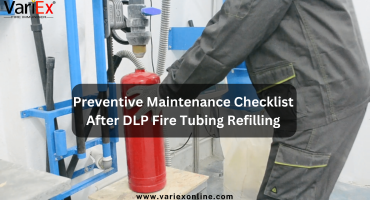 Read more +11 July 2025 in Fire Suppression
Read more +11 July 2025 in Fire Suppression

